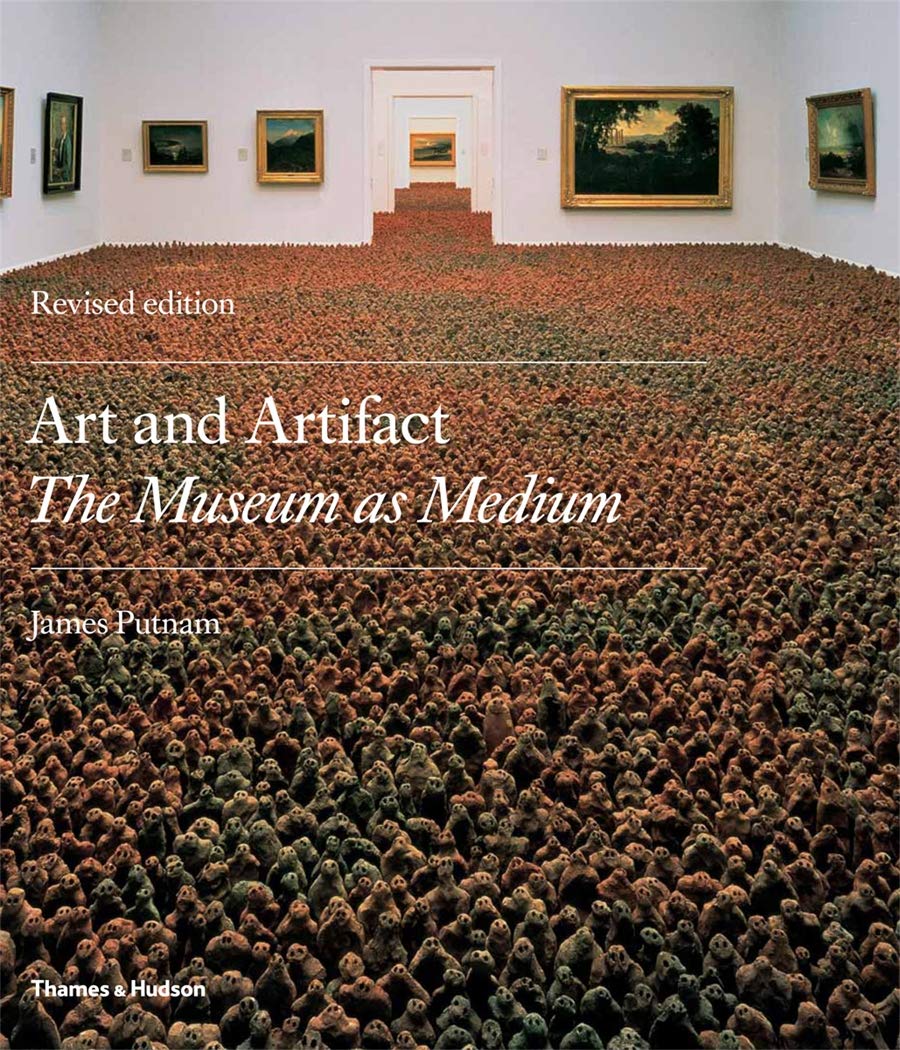About this deal
By bidding on, or purchasing this item, you are agreeing to us sharing your name and address details with that 3rd party supplier to allow us to fulfil our contractual obligations to you. The methods used to display artist’s work has become a tool to make tactical or political statements. Traditional methods of taxonomy, archiving, storage, and other aspects of curatorship have been variously appropriated, mimicked or reinterpreted. It is a book concerned with complex issues that expresses them in a simple, engaging way and refrains from retreating into jargon … a rewarding exercise in the visual.
Citing a wide range of examples, from Marcel Duchamp's "Portable Museum" to Damien Hirst's distinctive use of vitrines, James Putnam examines the themes by which the artist/museum relationship is defined and redefined. I think it is important to understand curation and why art work is intended to be displayed in a certain way – every element of the exhibition or installation has intended meaning and is representative of an underlying significance. A profusely illustrated survey of the role of contemporary artists and their work in museum presentation and display. Introducing Korea to a broad audience, this book also presents many previously unpublished Korean artifacts and artworks. The book covered the various methods of how collections have been displayed in the past to signify importance and significance of the objects, such as, vitrines, plinths, drawer cabinets and specimen jars.Citing a range of examples, James Putnam shows not only the ways in which artists have been influenced by museum systems and made their works into simulations of the museum, but also how they have questioned the role of museums, observed their practices, intervened in them and helped to redefine them. This edition has been updated to include recent artists’ projects that make use of grand architectural spaces within the museum, as well as those that explore off-site locations and the internet, capitalizing on the idea of the 21st-century ‘museum without walls’. By using the Web site, you confirm that you have read, understood, and agreed to be bound by the Terms and Conditions. From Marcel Duchamp’s ‘Portable Museum’ Boîte-en-valise of the early 1940s to the latest interventions by artists in museums’ displays, merchandise and education, artists of the last seventy years have often turned their attention to the ideas underpinning the museum. Neither ProQuest nor its licensors make any representations or warranties with respect to the translations.
Citing a range of examples, this title shows the ways in which artists have been influenced by museum systems and made their works into simulations of the museum. Many artists have exhibited their collections as an entity or a ‘museum’, thus contributing to a fresh understanding of the nature and role of the museum. Exchanging Valentines can be an awkward process, especially when you consider “Vinegar Valentines” and other snarky sentiments - whatever your tastes, enjoy the sweet and sour cards alike in this gallery! Updated from 200 1 , this new edition of Art and Artifact continues its discussion of the museum as a subject for artists and not just as a location for. From `cabinets of curiosities' to assemblages of found objects and imitations of museum displays, artists have often turned their attention to the ideas and systems traditionally embodied in the museum - display, archiving, classification, storage, curatorship - which they have then appropriated, mimicked and reinterpreted in their own work.Found objects or artists’ possessions have served as an extension of the artist’s studio, a storage place where both ideas and materials are evaluated. This functionality is provided solely for your convenience and is in no way intended to replace human translation. has sold millions of scholastic books to university libraries, academics, students and reflective bibliophiles throughout the world. From early instances of the urge to collect exotic objects, the "cabinet of curiosities," to assemblages of found objects and imitations of museum displays, artists have often turned their attention to the ideas and systems traditionally embodied in the museumdisplay, archiving, classification, storage, curatorshipwhich they have then appropriated, mimicked, and interpreted in their own ways.
Related:
 Great Deal
Great Deal 